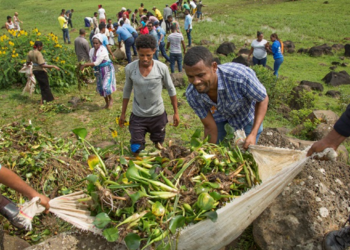Mud crab farming revolutionised in Kenya – Mud crab farming in Kenya has reached new heights thanks to Crabs Alive, the first nursery in the country to achieve significant success in this area. Justin Aniere, CEO of Crabs Alive, has spent more than a decade breeding mud crabs (Scylla serrata), housing the wild-caught specimens in aquaculture facilities near his Che Shale Hotel in Kenya.
After years of effort, last November marked a turning point: with the support of Scylla, a renowned mud crab advisory group, Crabs Alive successfully produced its first batch of crabs from the nursery. A second batch followed in December.
This pioneering achievement is the first step towards the development of a new mud crab farming industry in Kenya, promising benefits for coastal communities.
In a press release, Aniere expressed optimism that Kenya would join the mud crab farming countries for both domestic and foreign markets.
Crabs Alive has received approval and support from local and international organisations, including FAO and the Kenya Marine Fisheries Socio-Economic Development (KEMFSED) project, supported by the World Bank.
Crabs Alive has ambitious plans, which include the expansion of nursery and hatchery production facilities. It plans to work with local community farmers to produce commercial quantities of mud crabs. The company also aims to utilise government aquaculture facilities to produce the first commercial quantities of farmed crabs in the country.
In addition, Crabs Alive intends to collaborate with the local Bahari Hai Conservation Group to support conservation efforts of the mud crab fishery. Aquaculture of this type of crab requires access to reliable quantities of mature crabs for breeding, making a healthy local fishery crucial until local stocks can be domesticated. With initiatives like these, Crabs Alive is leading the way towards a sustainable future for mud crab farming in Kenya.
Mud crabs – Scylla serrata
Mud crabs, belonging to the species Scylla serrata, are fascinating crustaceans that inhabit the coastal and brackish waters of various tropical and subtropical regions around the world. These medium-large crabs are known for their variegated colouration ranging from blue-green to brown, perfectly camouflaging themselves with their surroundings.
A distinctive trait of mud crabs is their ability to spend long periods out of the water, especially during low tides. This habit is made possible by their highly adapted gill structure, which allows them to absorb oxygen from the air. Their life is closely linked to mangroves and brackish marshes, where they find shelter among roots and debris.
From a culinary point of view, mud crabs are highly valued for their tasty and sweet meat, which is particularly sought after in many Asian cuisines. Fishing and farming of mud crabs are significant economic activities in many regions, with the practice of aquaculture gaining popularity to ensure sustainable management of fish resources.
In addition to their gastronomic value, mud crabs play an important ecological role by contributing to the control of invertebrate populations and maintaining the balance in mangrove ecosystems. Their unique ecology and culinary versatility make mud crabs not only a key element of local economies, but also an interesting subject of study for marine biology and conservation enthusiasts.
Mud crab farming revolutionised in Kenya









